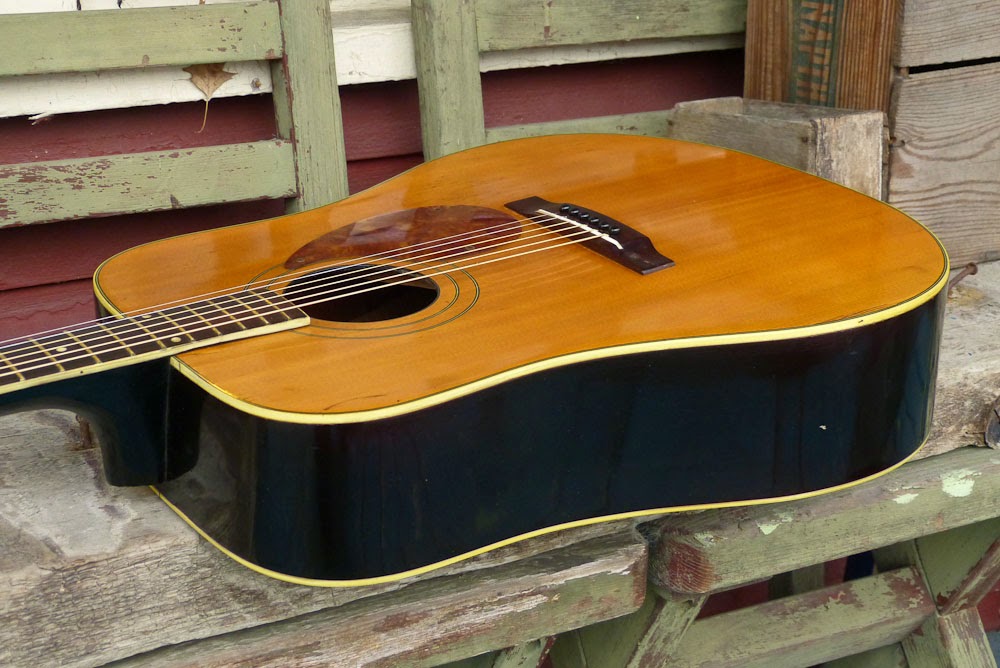1950s Kay K6100 X-Braced Dreadnought Guitar
From what I've gleaned -- and the useful stamp inside the body -- this is a K6100 model ("Western Rhythm" model) dreadnought and it sports, as we all like to hear as far as dreads are concerned, x-bracing. It's roughly the same size as a Martin D-18 and aims for that aesthetic (though boxier), but with laminate mahogany back and sides (it's got a solid spruce top, though), longer 25 3/4" scale, and a 1 5/8" nut it has a definitively different feel and a punchy "old country" tone with oodles of volume that leaps out in the mids.
This is a customer's guitar (and possibly will be up for sale) and it came here in decent shape with a replacement Martin-style bridge already installed and a past neck reset probably done as well. The frets needed light leveling/dressing work, the bridge needed string ramps and a saddle shave/intonation adjustment, and it needed a general setup as well. The work's done and it's a quick player, though a tiny amount of backbow in the neck past the 10th fret means the higher strings feel slightly stiffer after the neck join. Still, action is dialed to standard 3/32" bass and 1/16" treble at the 12th fret.
This is a customer's guitar (and possibly will be up for sale) and it came here in decent shape with a replacement Martin-style bridge already installed and a past neck reset probably done as well. The frets needed light leveling/dressing work, the bridge needed string ramps and a saddle shave/intonation adjustment, and it needed a general setup as well. The work's done and it's a quick player, though a tiny amount of backbow in the neck past the 10th fret means the higher strings feel slightly stiffer after the neck join. Still, action is dialed to standard 3/32" bass and 1/16" treble at the 12th fret.
Good-looking budget dread, huh? The finish looks great on this guy.
The tuners are new repro Kluson-style units I added. This came with cheesy low-end tuners and originally it would've been equipped with Klusons so I figured this was a nice nod to the past.
Original bone nut, too.
The board is radiused and rosewood with faux-pearl/cream dots. The frets are in good order and original brass. The board is also bound and the neck shape is a medium-sized C feel.
An interesting bit with this neck: when there's no tension it has a good amount of backbow but when it's tuned to pitch with 12s it staightens out over its length.
While the cool old tortoise pickguard is screwed-down, it's lightweight and doesn't buzz or rattle.
The replacement Martin-style bridge is a huge improvement over the original Kay-style bridge. It's rosewood and the pins are plastic. I pulled out the bone saddle (it was glued-in) and reprofiled as well as intonated it. It's low on the bridge but quite functional.
I also added string ramps for good back-angle (tone improvement).
The back, sides, and neck look sort of black-finished in the pictures but they're really a very, very dark brown/red color.
As you can see, the finish is in pretty good shape. There's minor wear here and there but not much to write home about.
...and it's probably due to the original chipboard case still hanging out with it all these years later.
















Comments